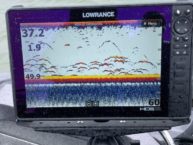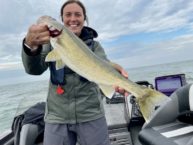The state of Wisconsin has decided to do something about declining walleye populations and embark on an aggressive stocking program.
“That’s not an overstatement,” said Ron Bruch, statewide fisheries planning coordinator for the Wisconsin Department of Natural Resources. “We’ve never done anything like this before. We’re not sure anyone has. We’re not doing this on a few lakes. We’re doing this on a landscape scale.”
In its essence, the plan calls for a shift from stocking “small fingerlings” — walleyes less than 2 inches — to “large fingerlings,” which can be as large as 8 inches.
“If you talk to any hatcheries guy, they’ll tell you ‘the bigger the better,’ ” Bruch said. “And we’ve studies to support that.”
It’s a rare stocking that sees more than 6 percent of small fingerlings survive into their first year. But 21 percent of large fingerlings make it.
Yet small fingerlings are the backbone of most hatchery programs, including Wisconsin’s, because they cost so much less. It costs Wisconsin about 42 cents to raise a small fingerling; that price jumps to $2.45 for each large fingerling.



